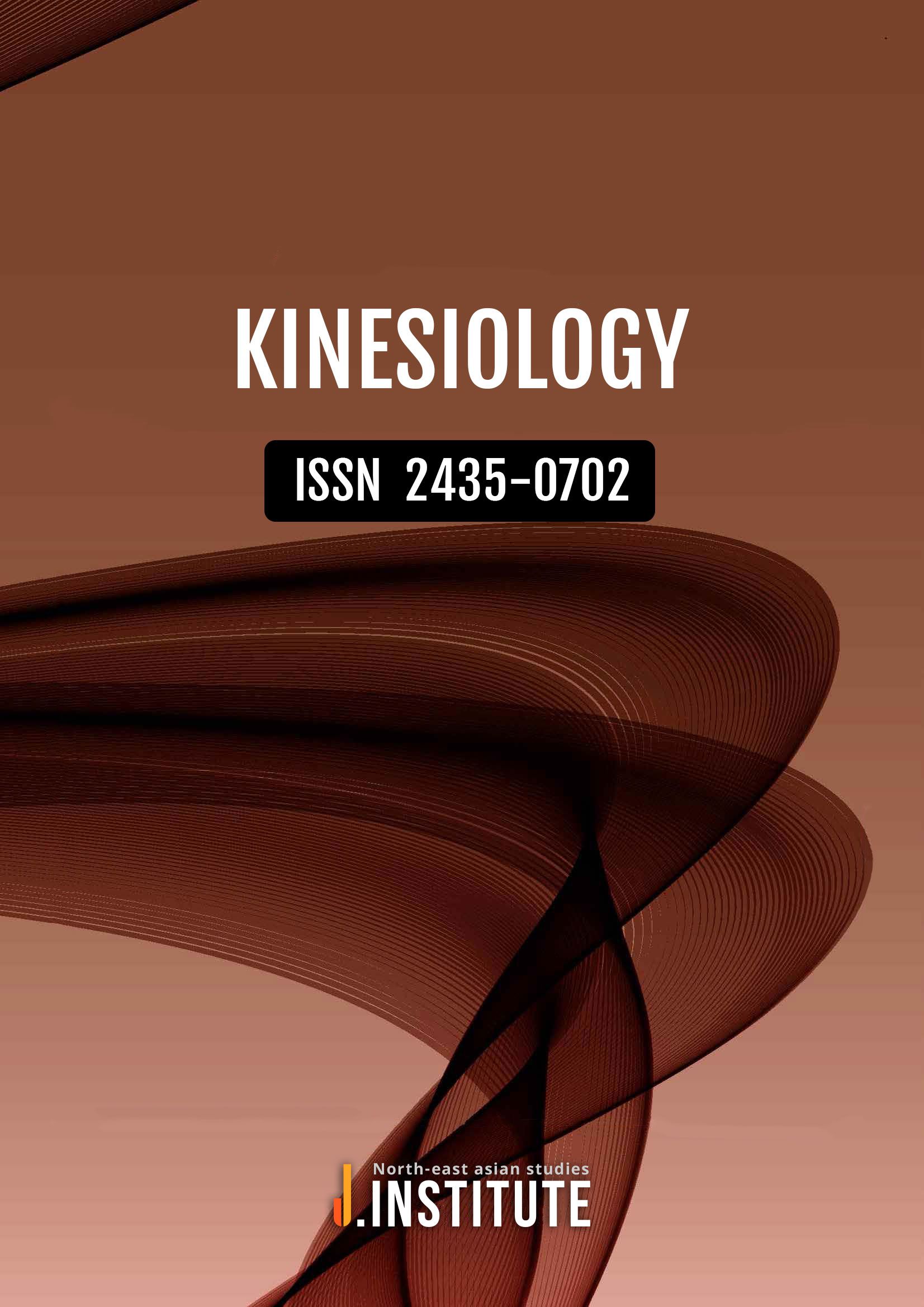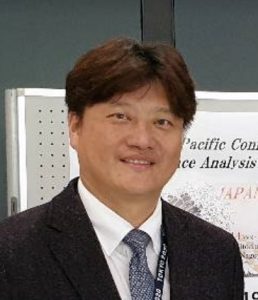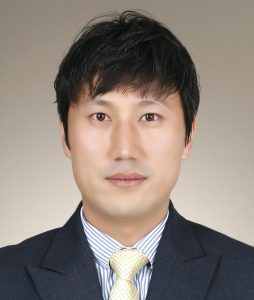Kinesiology is a historical interest in human life influence and has a basic life impact in various sports, exercise regimens, and body care regimens that play an important role in improving personal health and well-being.
Especially, recently due to the growing interest in health and the expansion of leisure time in East Asia, the desire to participate in physical activities is increasing, and the number of people watching sports as a healthy leisure activity is also increasing.
In addition, as national publicity and national unity effects of international sports events such as the Olympic Games are verified, a system for supplying players and supporting players in East Asia is required at a time when sports competition between countries is intensifying. Not only that, we are preparing strategies for policies that actively respond to the living environment, such as developing various policies to increase the participation rate of people in daily life sports and preparing systems to enhance physical abilities. Detail with the body from life, movement, culture, and trend.
As such, body management therapy has international influence in various areas such as health, contributes to improving human health and quality of life, and promotes international cooperation and understanding.
Therefore, this journal helps to understand the body’s motor control mechanisms and plays an important role in the evaluation of motor function understands the interaction between motor control and cognitive function and applies it to motor function evaluation, training, and rehabilitation to help improve individual motor skills and manage health. It is used in various fields such as fitness and medical fields.
Detail with a we recommend that potential authors review recent issues to determine whether their paper is appropriate to the journal.
Aims & Scope
Area 1 Sport
Area 2 Exercise Prescription
Area 3 Body Care Therapy
Latest Articles
+ View all articles
-
Purpose: Patients with Parkinson's disease (PD) often experience postural instability, respiratory muscle weakness, diaphragm weakness, and autonomic nervous system imbalance. To address these issues, we designed a therapeutic exercise routine that PD patients may easily incorporate into their daily lives. Method: The Therapeutic Exercise for Respiratory function and Autonomic balance in Parkinson’s Disease (TERA-PD) was designed to improve axial postural instability, respiratory muscle strength, and heart rate variability in PD patients. The exercise was formulated based on our previous study, a review of the literature, and guidance from experts. Results: The warm-up exercises are (1) stretching the neck, and (2) massaging the scalene muscles. The main exercises are (1) torso stretch with breathing, (2) torso rotation with breathing, (3) holding the breath at the maximum inhalation, and (4) inhaling and exhaling in a steady rhythm while changing spinal posture accordingly. Conclusion: Given that PD patients experience both postural instability and autonomic nervous system imbalance, targeted treatment is necessary. In the future, we plan to implement TERA-PD in clinical settings to evaluate its effectiveness. With further research, we aim for TERA-PD to become an effective method for alleviating the symptoms and improving the quality of life of PD patients.Keyword:Parkinson’s Disease, Respiration, Autonomic Nervous System, Therapeutic Exercise, Routine
-
Purpose: Adolescence is a crucial period for value formation, with sports playing a key role in socialization and adherence to norms. Modern sports convey societal values and influence youth behavior. While there is extensive research on sports stars in Korea, studies on their impact on Chinese youth are limited. This research aims to analyze the images of sports stars to understand their effects on Chinese youths' attitudes and participation, and to provide foundational data for improving sports policies and programs. Method: The study used a 26-item questionnaire divided into personal characteristics (3 items), sports interest (8 items), and sports star images (15 items). Reliability was between .580 and .796, with an overall .792. Data collection involved direct school visits and self-administered surveys. SPSS 27.0 was used for t-tests, ANOVA, and multiple regression analysis to examine the impact of sports star images on sports interest among Chinese adolescents. Results: Based on gender, male adolescents showed higher perceptions of sports stars’ appearance, evaluation, and sensory images. There were no differences based on school year. The appearance, evaluation, and sensory images of sports stars significantly impacted sports interest. Additionally, differences in sports interest were ob-served based on gender and interest in sports stars, with a higher interest in sports stars correlating with increased sports interest. Conclusion: Firstly, male adolescents showed higher perceptions of sports star images in appearance, evaluation, and sensory aspects compared to females, with no significant differences in athletic performance images. No differences were found based on school year. Secondly, sports stars' appearance, evaluation, and sensory images significantly impact sports interest, highlighting these factors as key to increasing adolescents' engagement in sports.Keyword:Adolescent Value Formation, Sports Star Image, Youth Sports Engagement, Gender Differences in Sports Perception, Impact of Sports Stars on Youth Attitudes
-
Purpose: Forest hiking programs have positive effects on health improvement, stress relief, and local economic revitalization. However, addressing issues such as inadequate accessibility and lack of program diversity requires systematic analysis and evaluation. This study aims to analyze the current operational status and explore ways to improve participation rates and program quality. By proposing practical improvement measures, the study in-tends to provide foundational data for the sustainable development of the program. Method: This study aims to analyze the status of forest hiking programs based on reports from 2015 to 2023. It will evaluate visitor numbers, participation rates, operational status, and facility conditions to develop strategies for program revitalization. Research questions are focused on changes in visitor numbers, participation rates, operating hours and frequency, and facility conditions. Data were collected from various reports, and key findings were derived through meta-analysis. Results: From 2015 to 2023, the number of visitors and participation rates for forest hiking programs in-creased, and the number of programs and operating hours also expanded. Following a temporary decline due to the COVID-19 pandemic, there was a recovery trend. The increase in participation rates was attributed to program diversification, the addition of meditation and family programs. Additionally, facility conditions continuously improved, significantly reducing the need for further improvements by 2023. Conclusion: Forest hiking programs have increased in visitor numbers and participation rates from 2014 to 2023. Program diversification, quality improvements, facility upgrades, and the introduction of online and hybrid options have boosted satisfaction and accessibility. Enhanced collaboration with the local community has further supported the program's sustainability. These strategies are crucial for the successful operation and development of the programs.Keyword:Forest Road, Program Quality, Facility Maintenance, Community Involvement, Program Diversification
-
Purpose: The purpose of the study was to provide a critical review of existing research and explore the unique context of LGBTQ+ athletes in China. This study closes a significant gap in the literature, which is mainly concentrated in Western countries, and explores the sociocultural and political dynamics that influence the experiences of LGBTQ+ athletes in China. Through this research, we will further understand the difficulties faced by Chinese LGBTQ+ athletes and propose evidence-based strategies and policies to foster a more inclusive and supportive sports environment. We aim to contribute to the global debate on diversity and inclusion in sports, and strive to have the demands inherent in China's LGBTQ+ recognized and addressed. Method: This study employed a literature review method to analyze international inclusion of LGBTQ+ athletes, and focuses on Chinese inclusion of LGBTQ+ athletes. It explored the social, cultural, legal and political back-ground that affects LGBTQ+ athletes in China. This study combines research results from different sources such as academic journals, policy reports, and media analysis to provide an overall perspective on the current status of Chinese LGBTQ+ athletes. Results: The results of the study show that LGBTQ+ athletes in China face severe discrimination and exclusion due to social prejudice, insufficient legal protection, and lack of policy support within sports organizations. They often face barriers such as homophobia, heterosexism, and participation. The study highlights the role of traditional cultural values, media representation and political factors in continuing to address these issues. Despite some progress, there are still significant gaps in support and awareness of LGBTQ+ athletes in China. Conclusion: Creating a more inclusive and supportive environment for Chinese LGBTQ+ athletes require legal reform, policy advocacy, and cultural change. The study highlights the importance of developing and training tailored educational programs for sports administrators, promoting positive media expression, and fostering community-based initiatives. The study calls on academics, policymakers and practitioners to work together to address the unique issues facing LGBTQ+ athletes in China and promote diversity and inclusion in sport world-wide.Keyword:LGBTQ+, Chinese Sports, Discrimination, Inclusion, Socio-Cultural Dynamics
-
Purpose: This study aims to analyze the movement of players at the 2022 World Cup in Qatar and the 2023 Asian Cup in Qatar, with the aim of analyzing movement across tournaments and continents. Method: To do this, we collected and analyzed official match reports from the tournament and came up with the following results. Results: First, the Asian Cup had higher movement than the World Cup in Total Distance, Zone 1 (walk), and Zone 3 (run). Second, the World Cup had higher movement than the Asian Cup in the High Speed Runs and Sprints factors. Third, in Total distance, the Asian Cup has higher movement and South America has lower movement. In Zone 2 and Zone 3, the movement of South America is lower than the other continents. Fourth, High Speed Runs is dominated by Europe. Sprints were lower for the Asian Cup. This study compares soccer styles and playing strategies across continents and races in the World Cup and Asian Cup. Conclusion: This study was able to diagnose the performance of Asian soccer and identify areas that need to be improved in the future. We hope that this research will help Asian countries develop their training programs and tactics.Keyword:Soccer, World Cup, Asian Cup, Movement, Distance Traveled
Publishing Schedule
| JAN | FEB | MAR | APR | MAY | JUN | JUL | AUG | SEP | OCT | NOV | DEC | |
|---|---|---|---|---|---|---|---|---|---|---|---|---|
| Submission | 8/30 | |||||||||||
| Editorial Review | 9/10 | |||||||||||
| Double Blind Peer Review | 9/30 | |||||||||||
| Review-Form Reflection Review | 10/10 | |||||||||||
| Accepted | 10/20 | |||||||||||
| Manuscript Editing Review | 10/30 | |||||||||||
| Scientific Proofreading | 11/30 | |||||||||||
| Open & Hybrid Review | 12/10 | |||||||||||
| Published | 12/30 |
♦ Issues Per Year: Annual
Board Members
Head of Editorial Organization / President
Hongbum Shin
Keimyung University, KOR
[Curriculum Vitae]
General Vice President
Hyongjun Choi
Dankook University, KOR
[Curriculum Vitae]
Vice President
| Sangsoo Park Planning and Coordination | Daejeon University, KOR |
| Changyoung Kim Public Relations | Myongji University, KOR |
Editor in Chief
Wookwang Cheon
Keimyung University, KOR
[Curriculum Vitae]
Executive Editor
Hwansuk Choi
Jeonju University, KOR
[Curriculum Vitae]
Editor in Administrations
| Changbae Hong | Center for Sport Science, KOR |
| Changmo Cho | Keimyung University, KOR |
| Hojin Chung | Nanyang Technological University, Singapore |
| Hyeongil Yeo | Woosuk University, KOR |
| Jidong Tian | Keimyung University, KOR |
| Jie Ren | Jeonju University, KOR |
| Minji Lee | Daejeon University, KOR |
| Ruofei Du | Pukyong National University, KOR |
| Seongjin Hong | Honam University, KOR |
| Sunghee Koh | Myongji University, KOR |
| Sunghoon Kim | Yonsei University, KOR |
| Taehun Kim | Keimyung University, KOR |
| Tenglong Fan | Keimyung University, KOR |
| Wang Zi-Yan | Jeonju University, KOR |
| Weisheng Chiu | Hong Kong Metropolitan University, Hong Kong |
| Xuefeng Bai | Zhejiang University, China |
| Zhou Chao | China National Engineering Research Center for Information Technology in Agriculture, China |
| Xuemei Zhao | Shanghai University of Sport, China |
History
| 2015 | ||
| JUN. 23 | Establishment of the Publisher | |
| DEC. 05 | Inaugural General Meeting | |
| 2016 | FEB. 01 | International Journal of Sport (ISSN 2423-8287) |
| JUN. 30 | First Journal Publication | |
| OCT. 11 | Digital Object Identifier Enrollment (DOI) Google Scholar |
|
| 2019 | ||
| APR. 23 | EBSCO | |
| APR. 30 | I2OR | |
| MAY. 07 | ProQuest Exribris |
|
| MAY. 15 | Infobase Index | |
| MAY. 31 | SIS | |
| JUN. 30 | International Journal of Sport Title Alteration: Kinesiology (ISSN 2435-0702) | |
| 2020 | NOV. 02 | KCI (Korea Citation Index) |

Paper Submit
- inquiry@j-institute.org










